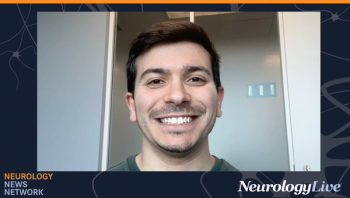
Cerebral Amyloid Angiopathy-Associated Transient Focal Neurological Episodes May Increase Risk of ICH, Death
The research also identified small subcortical cerebral amyloid angiopathy-associated acute ischemic stroke lesions as risk factors for death in these patients.
A recently published systematic review and meta-analysis of individuals with cerebral amyloid angiopathy (CAA) who present with transient focal neurological episodes (TFNEs) showed high rates of lobar intracerebral hemorrhage (ICH) and mortality. This was also the first study to find misdiagnosis of transient ischemic attack (TIA) and the use of antithrombotics to influence and increase this risk.
Led by Juan M. Sanchez-Caro, MD, Department of Neurology, La Paz University Hospital, in Madrid, Spain, the analysis included 42 studies, all which had observational reports of TFNEs, as well as patient-level clinical, imaging, and prognostic data. In total, 222 CAA-associated TFNE cases were pulled from those studies, along with 26 additional patients provided by a hospital-based cohort. The only significant differences between the cohorts were a higher proportion of patients with diabetes (23% vs 5%; P = .03) and a longer follow-up time in the hospital-based cohort (1.64 years vs 0.82 years; P = .001).
In the pooled analysis, 108 participants (43.5%) had TFNE that consisted of motor symptoms and a total of 212 cases (85.5%) indicated either convexity subarachnoid hemorrhage (CSAH) or cortical superficial siderosis (CSS). For those who did reach follow-up (n = 185; median duration, 1 year [interquartile range (IQR), 0.8-2.5]) symptomatic lobar ICH occurred in 76 patients, and 31 died (16.5%). Sanchez-Caro et al wrote that, "through a better understanding of TFNEs and CAA and a more accurate stratification of the hemorrhage risk, our work could help clinicians improve the management of patients with CAA."
READ MORE:
In the bivariate analysis, investigators identified a significant association between those with motor TFNEs who used antithrombotics and a higher ICH incidence (OR, 2.08 [95% CI, 1.16-3.70]). Conversely, reports of CSAH were significantly associated with lower ICH incidence (OR, 0.31 [95% CI, 0.15-0.64]). The effect estimates for antithrombotic use (OR, 1.99 [95% CI, 1.07-3.7]) and CSAH (OR, 0.39 [95% CI, 0.2-0.79]) remained significant after a binary logistic regression model, whereas this was not the case for the effect estimate of motor TFNEs (OR, 1.51 [95% CI, 0.97-2.98]). Sanchez-Caro et al noted however that an insufficient sample size may be the reason for this lost significance.
Lobar ICH occurred significantly earlier after a motor TFNE (OR, 0.91 [95% CI, 0.30-1.16] years), in the absence of CSAH (OR, 0.73 [95% CI, 0.17-1.30] years), and when antithrombotics were used (OR, 1.04 [95% CI, 0.09-1.41]). There were no associations between sensory TFNEs, microbleeds, CSS, and acute ischemic stroke (AIS) with a higher risk of ICH. In the bivariate analysis, CSS (OR, 3.20 [95% CI, 1.16-8.91]), AIS (OR, 7.18 [95% CI, 1.52-33.97]), and ICH (OR, 3.01 [95% CI, 1.36-6.69]) were all associated with an increased risk of death.
Traditionally, it has been shown that TFNEs can mimic other neurological disturbances, such as TIAs, migraine auras, or focal seizures. The main reason for the initiation of antithrombotics was the suspicion of a TIA and the lack of baseline MRI; however, the study authors noted that it is possible that among patients with CAA initially misdiagnosed as having TIAs, those suffering from subsequent ICH were more likely to be reclassified as patients with CAAs and TFNEs, leading to an overestimation of the risk of ICH in this group.
A binary logistic regression model that fit CSS only, AIS with CSS, and lobar ICH, confirmed their significant associations with death during follow-up (ORs, CSS only, 4.45 [95% CI, 1.78-11.16]; AIS with CSS, 27.95 [95% CI, 3.60-217.40]; lobar ICH, 4.46 [95% CI, 1.78-11.159]). The risk of death was not associated with TFNE symptoms, CSAH, microbleeds, and the use of antithrombotics.
REFERENCE
Sanchez-Caro, JM, Martinez IL, Celis Ruiz E, et al. Transient focal neurological events in cerebral amyloid angiopathy and the long-term risk of intracerebral hemorrhage and death: a systematic review and meta-analysis. JAMA Neurol. 2022;79(1):38-47. doi:10.1001/jamaneurol.2021.3989
Newsletter
Keep your finger on the pulse of neurology—subscribe to NeurologyLive for expert interviews, new data, and breakthrough treatment updates.



























